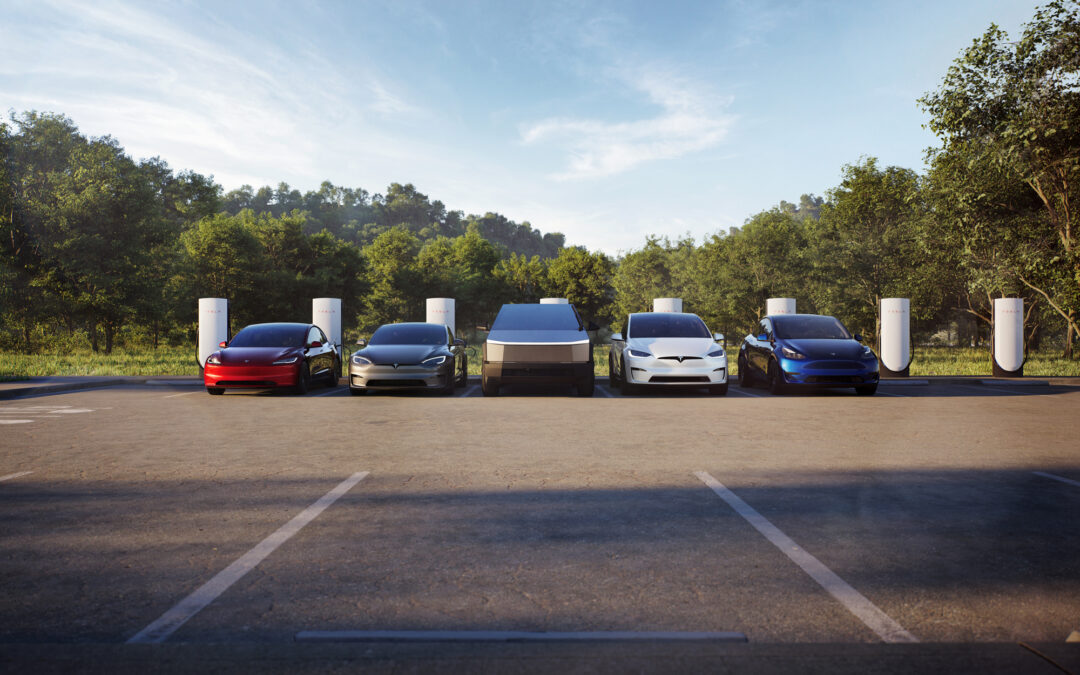How to boycott Tesla
The irony of Elon Musk’s plunge into politics is that the people he’s upset the most are his own customers. Or they were…
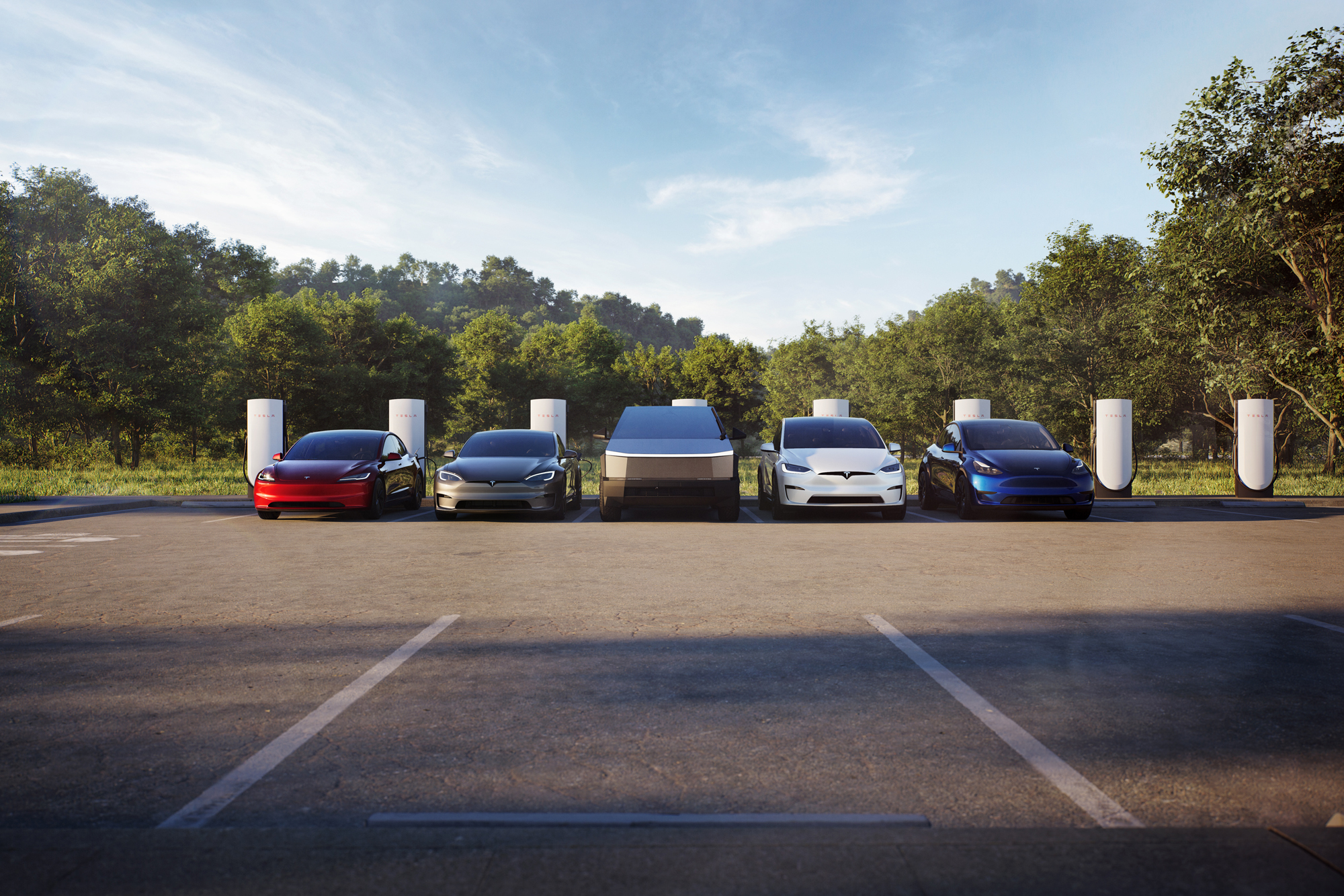
The irony of Elon Musk’s plunge into politics is that the people he’s upset the most are his own customers. Or they were… These are people who, with the best of intentions, bought a car that might help save the planet. Now that Musk’s agenda has shifted in a direction that’s hard to swallow, or indeed fathom, there’s a growing appetite for non-Tesla alternatives.
Musk’s cars remain very good in most cases – but fortunately the rest of the world is catching up fast, and even overtaking the Tesla rivals.
What’s a Teslarati-turned-refusenik to do? We have a few suggestions for alternative EVs with less baggage.
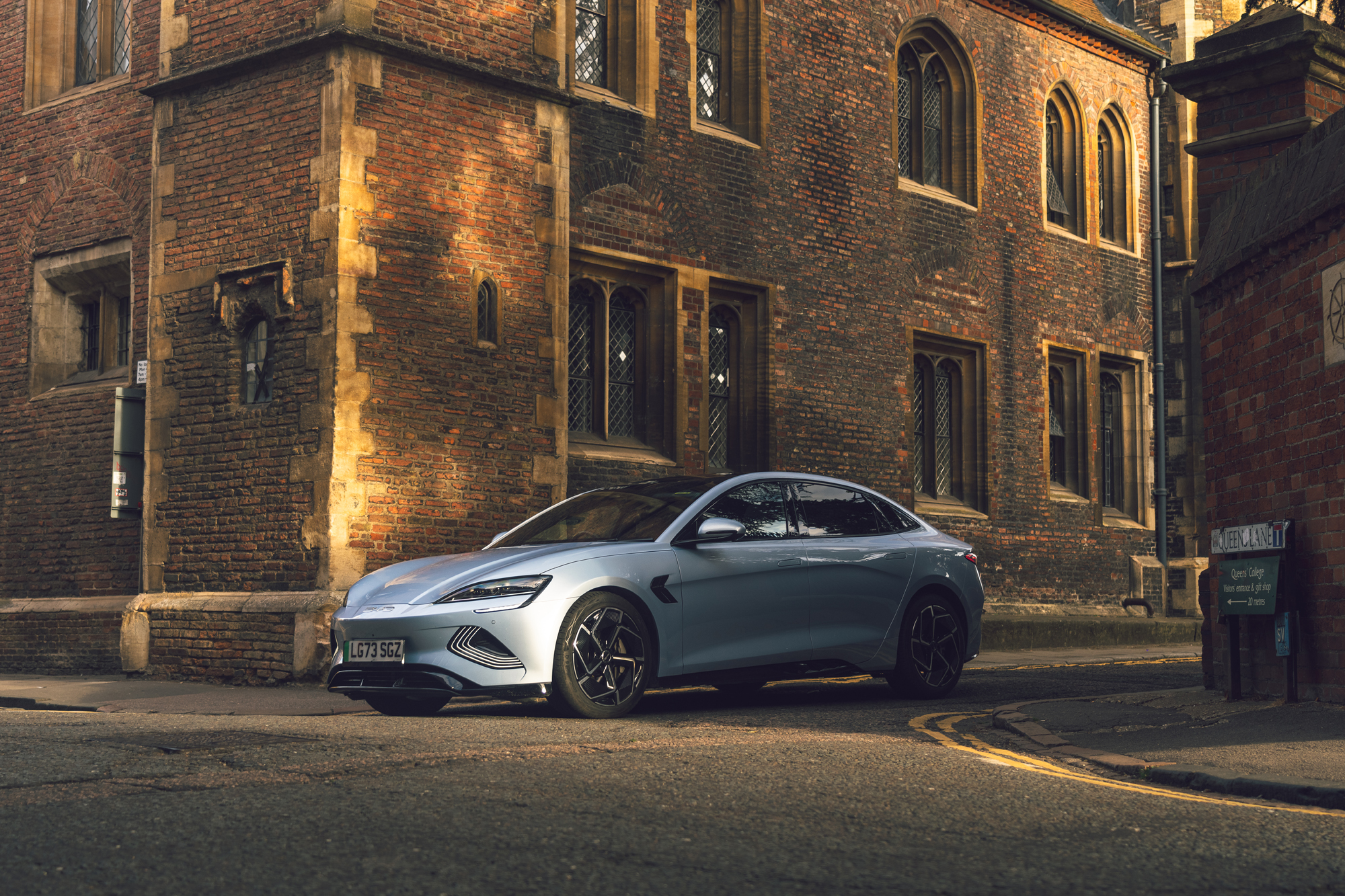
BYD Seal instead of the Model 3
It’s difficult to know if swapping out of a Model 3 into the Chinese-built BYD Seal is simply swapping one distant autocrat for another, but at least the BYD has actual indicator stalks.
One of many remarkable things about the Model 3 is that, for a time, it made the sedan cool again. BYD is tapping into that uptick with the Seal, and there’s a sense of easy liveability – not for BYD the quirks of the Model 3’s user interface. Generically styled (but when did that harm the 3?), the Seal is comfortable and packs a useful range (up to 354 miles) among an impressive bunch of figures, including power output.
If anything indicates just how silly the horsepower game has become, it’s the outputs these models can claim for their top-spec versions. The Model 3 Performance, a family saloon remember, has 453bhp (or 510 in the US) and can do 0-62mph in 3.1 seconds. But wait! The all-wheel-drive Seal produces even more – 523bhp – even if it can’t quite match the Tesla’s sprint time.
Fine margins separate these two, as you’d expect given that BYD has so clearly targeted the Model 3. But if you’re after an alternative to a Musk model, the BYD offers the sort of tech-assured modernity that should appeal.
VERDICT: CLOSE
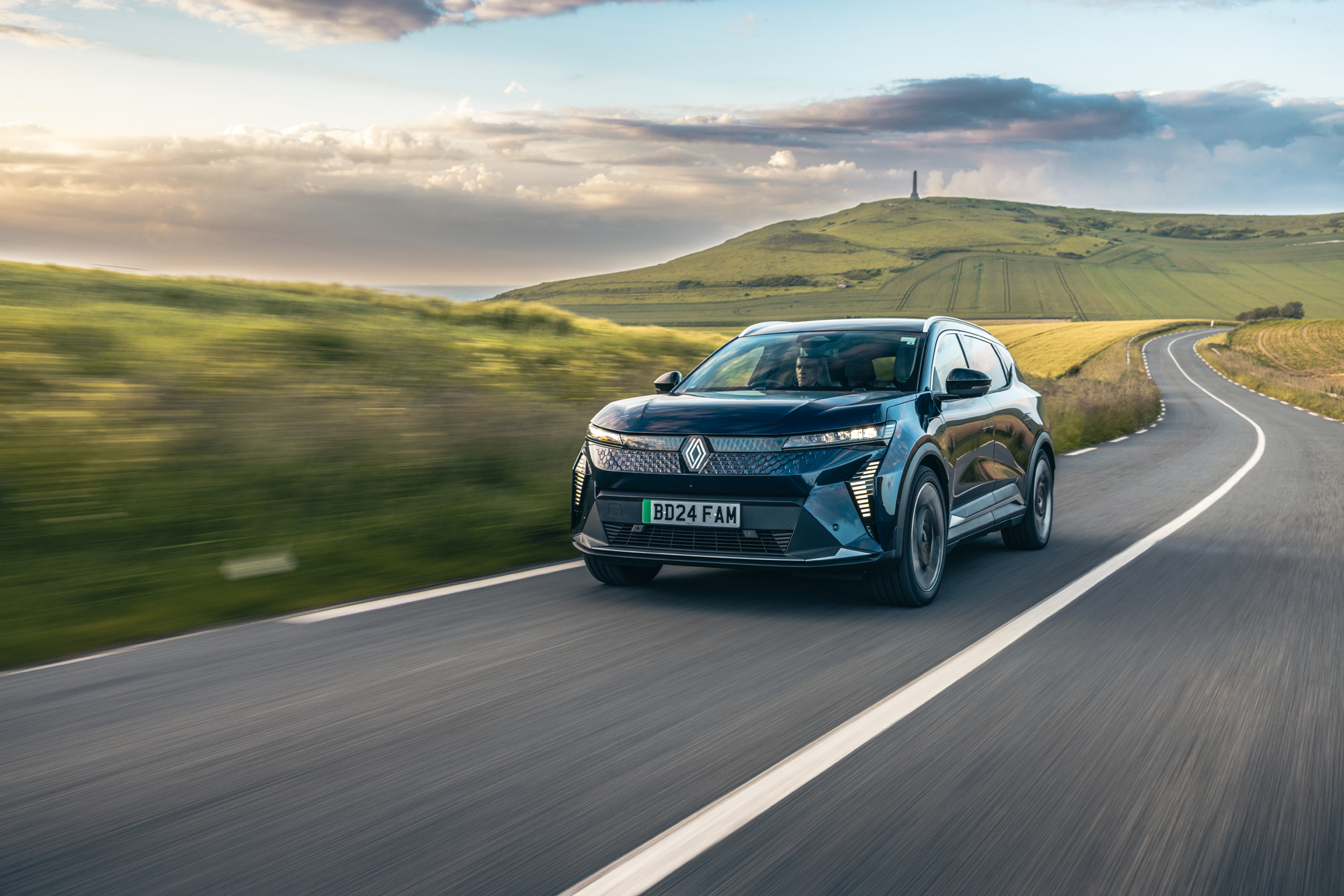
Renault Scenic E-Tech instead of the Model Y
Of all the cars in the Tesla stable, the pre-facelift Model Y is the one that least deserves its sales success. It steers poorly and the ride is worse, although the recent facelift has attempted to address those disappointments.
The Scenic, on the other hand, is the sort of EV that feels mature, like the engineers have had time to get used to this new propulsion method and made it function easily. There are few compromises, balancing comfortable ride quality with decent interior space and just the right amount of pace. Renault’s long history of making brilliantly normal family cars is channelled to great effect – the iPad holder in the rear armrest, for instance, is a brilliantly family-friendly detail.
The Scenic demonstrates the changing of the guard. Previously, Tesla could rely on its novelty factor and best-in-class range to counter the questionable build quality and iffy user interface. But EVs are common now, and with the Scenic’s range of up to 379 miles from the bigger of the two batteries it can outlast the Tesla by six miles. At least that’s the theory – in reality, we’ve often found that Tesla’s range claims are far closer to the real figures than most other manufacturers’.
VERDICT: Easy win for the Scenic
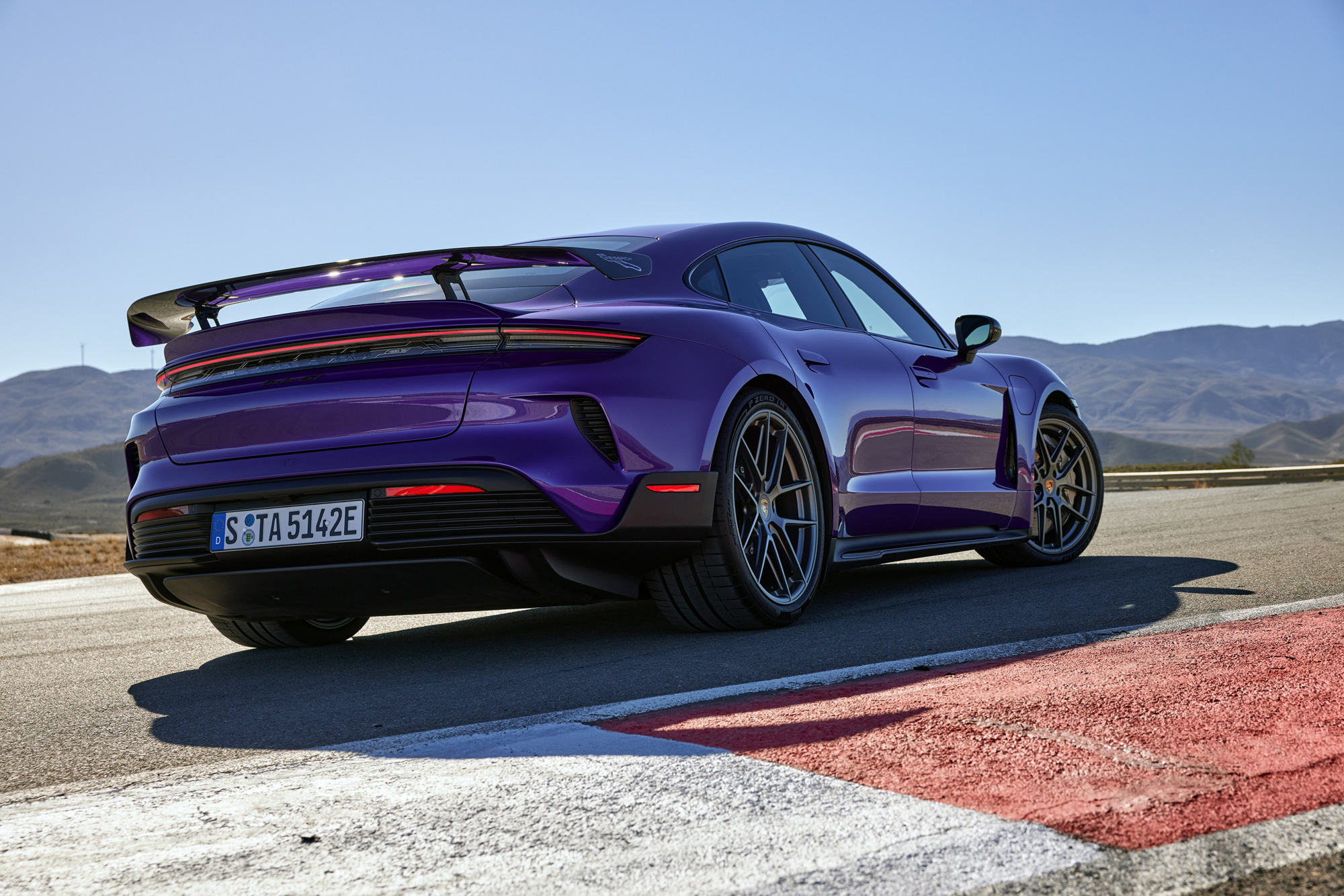
Porsche Taycan instead of the Model S
The arrival of the Taycan was a watershed moment for Porsche, pouring its heart and soul into being at the forefront of the EV revolution, but it’s easy to forget how much the Model S also sent shock waves through the world’s automotive markets.
So both were pioneers, but now it’s difficult to escape the age difference between the two. First launched back in 2012, the Model S is seven years older than the Taycan and hasn’t benefitted from quite the same level of updates since then, whereas the Taycan has benefitted from the more traditional approach to facelifts accompanied by technical improvements.
It’s not the only difference in philosophy. Porsche made a great song and dance about the repeatability of the Taycan’s accelerative performance when it launched the car, with a then-innovative two-speed gearbox aiming to benefit both range and acceleration. The Model S Plaid attracted all the headlines when it launched (1006bhp and a sub two-second 0-60mph time is mighty, albeit with caveats about the way Tesla gets to those figures) but there have always been questions around how often it could do that.
And now that Porsche has the Taycan Turbo GT, with 1093bhp and 2.2 seconds, the Plaid is no longer quite the statement it once was. Even Elon can’t stop the advance of time.
VERDICT: Ancient S outclassed by the Porsche
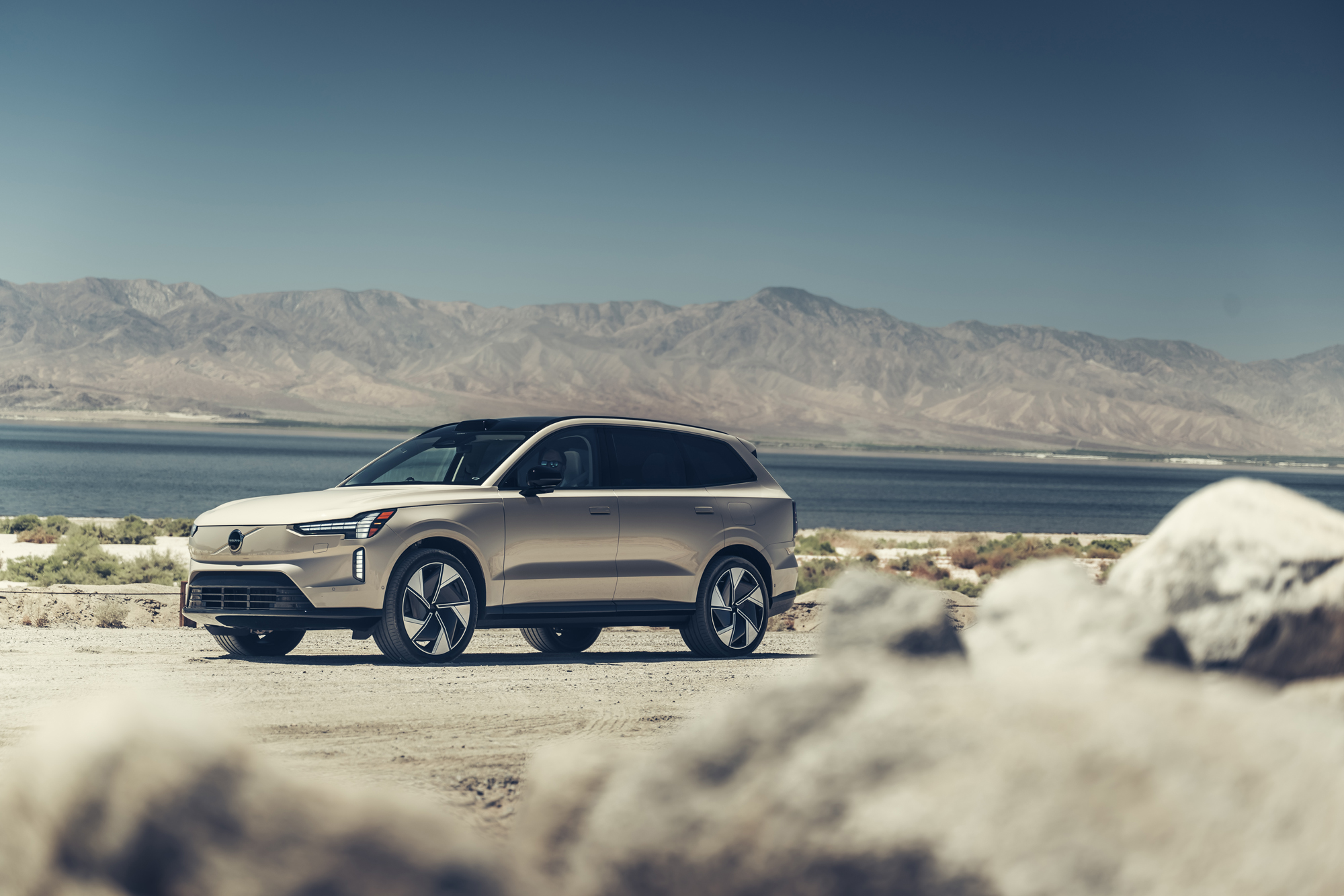
Volvo EX90 instead of the Model X
Both have seven seats but only one can fart and dance. And there, in a single sentence, is why Tesla makes waves where others make ripples.
But what do you really want from your family wagon – a car whose rear doors open like a DeLorean or one whose interior is rich in USB-C ports and has multiple crash sensor systems?
The Volvo is definitively not interesting but this is where its strength lies, delivering on a pledge of extreme refinement (it’s one of the quietest cars we’ve driven) and ease of use. Like the Tesla, the rearmost rows of seats all fold flat into the floor – no mean feat given the skateboard battery arrangement – and without a grazed knuckle in sight.
Also like the Tesla, Volvo’s interior vibe is minimalist but with a degree of extra style. The Model X trades on the starkness of its interior, especially if you opt for white leather, but the Volvo manages to balance the cleanliness with a softer feel, hugging you in a Scandi embrace and thus injecting a bit more character into it.
You’ve got to admire Tesla for trying something so different when it launched the X back in 2015, but time has caught up with the X as surely as with the S. Others can do party tricks if that’s what you really want, and now the Volvo has shown you can do comfort, refinement and seven seats in the same package.
VERDICT: No competition for the family-friendly Volvo
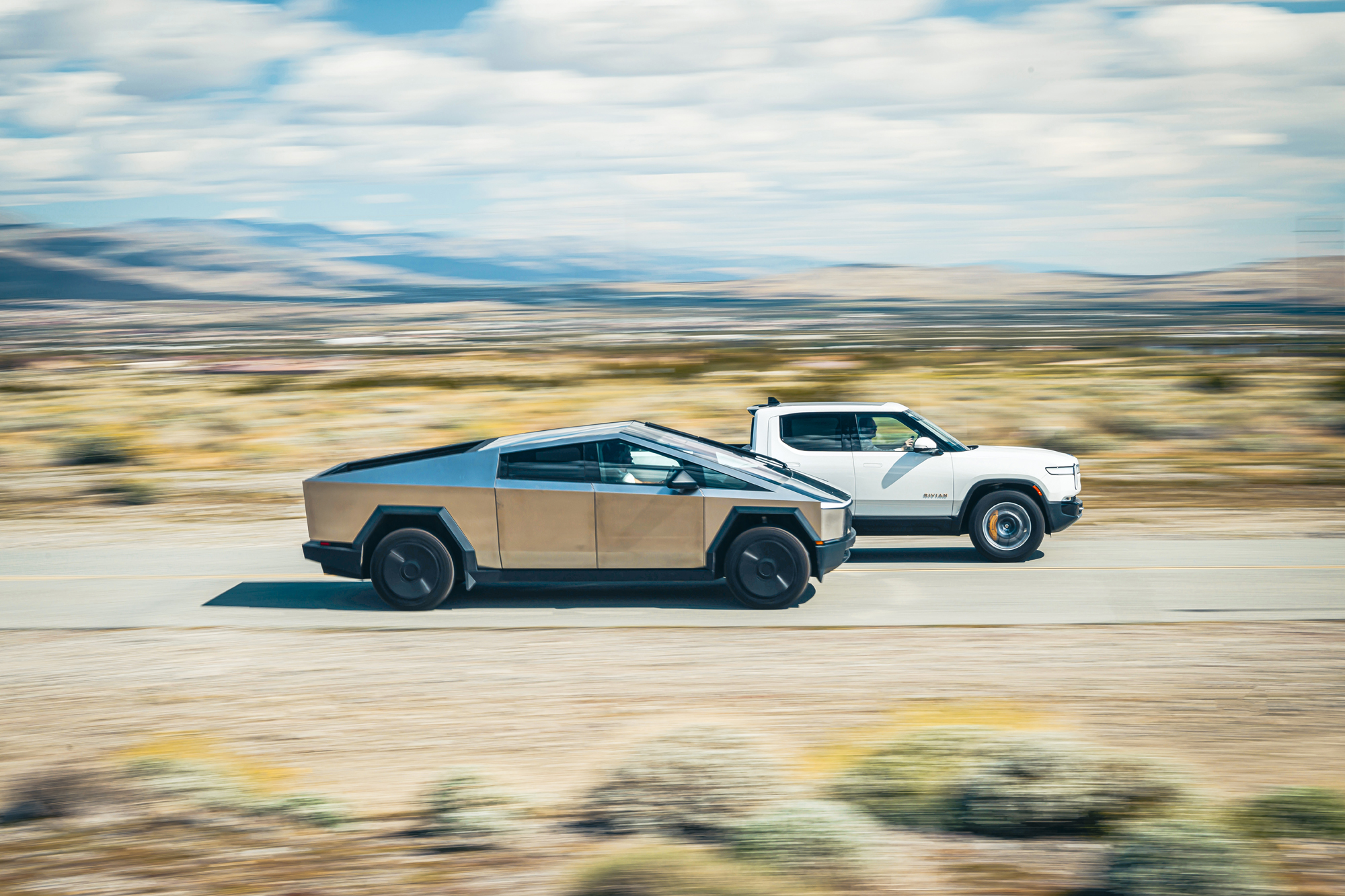
Rivian R1T instead of the Cybertruck
The contrasts couldn’t, at first, be greater, not least with the design: the Rivian has the friendly face like a Pokemon character whereas the Cybertruck has all the subtlety of the Berlin Wall. Rivian promotes an outdoorsy, nature-led lifestyle in its marketing; Tesla opts for a punk-esque script. RJ Scaringe projects a family-focused image; Elon… well…
And yet, to drive, they’re surprisingly similar. This feels especially odd in the Cybertruck – as you approach the thing, you suspect it wants to go all Jack Reacher on you, but then as soon as you drive it you’re amazed by how supple it is.
What I find remarkable about both is how normal, how car-like, they feel from inside. Both flow easily down a road, with steering that is light in your hands and a delicacy that belies their sheer size. The R1T and the Cybertruck ride on air suspension and both do the neat trick of absorbing the worst of America’s bumpy roads.
In terms of power, they are evenly matched; the R1T has 835bhp from its quad-motor set-up, the Tesla has 845bhp from its three motors. The Cybertruck feels the quicker of the two – there’s something unrelentingly brutal about the way this 3.1-tonne vehicle can pile on pace. It’s a great novelty but you do end up feeling queasy after only a couple of runs up to 60mph. The Rivian isn’t slow but it doesn’t scramble your organs in quite the same way.
Perhaps that’s what is weirdest about both of these – that despite the contrasting philosophies they are remarkably similar. Both are easy to live with and offer an attractive alternative to the V8s you normally get in pick-up trucks.
There is, perhaps, one final irony – the red bit of middle America that has been so reluctant to embrace electric cars might now be looking at them more favourably, thanks to the Cybertruck and Musk’s reinvention.
VERDICT: Dead heat
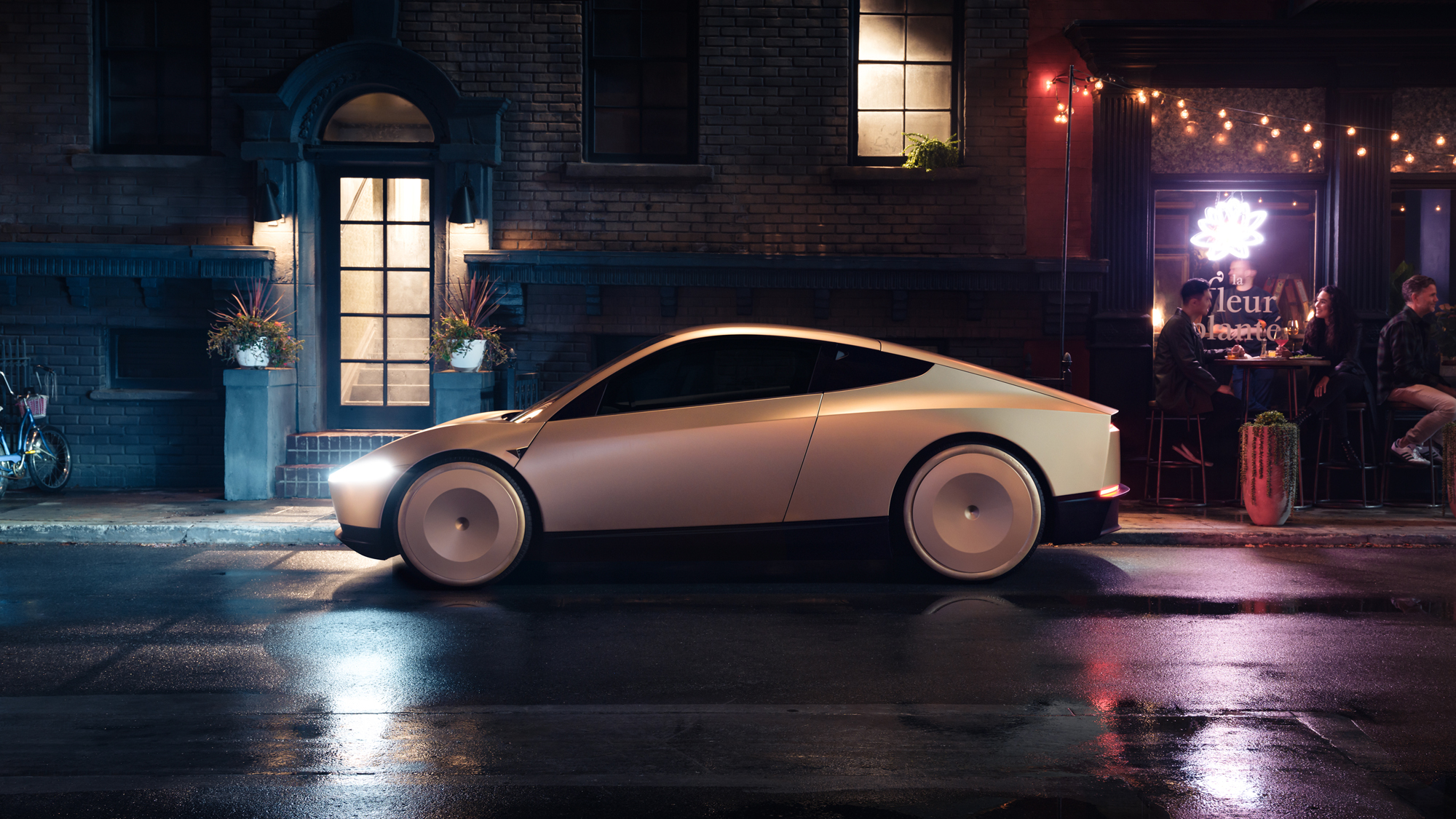
Walking instead of the Cybercab
At the moment, we have to take Elon Musk’s word about what the Cybercab can do. But with companies such as Waymo proving that driverless taxis are entirely possible, it surely won’t be long before Elon unlocks the potential of his driverless taxi, leaving you with little option but a return to the oldest form of transport.

